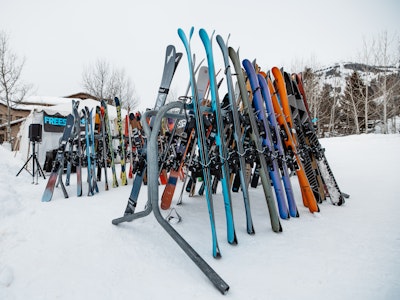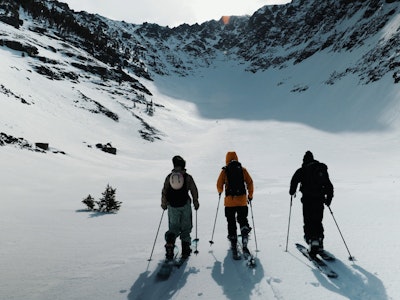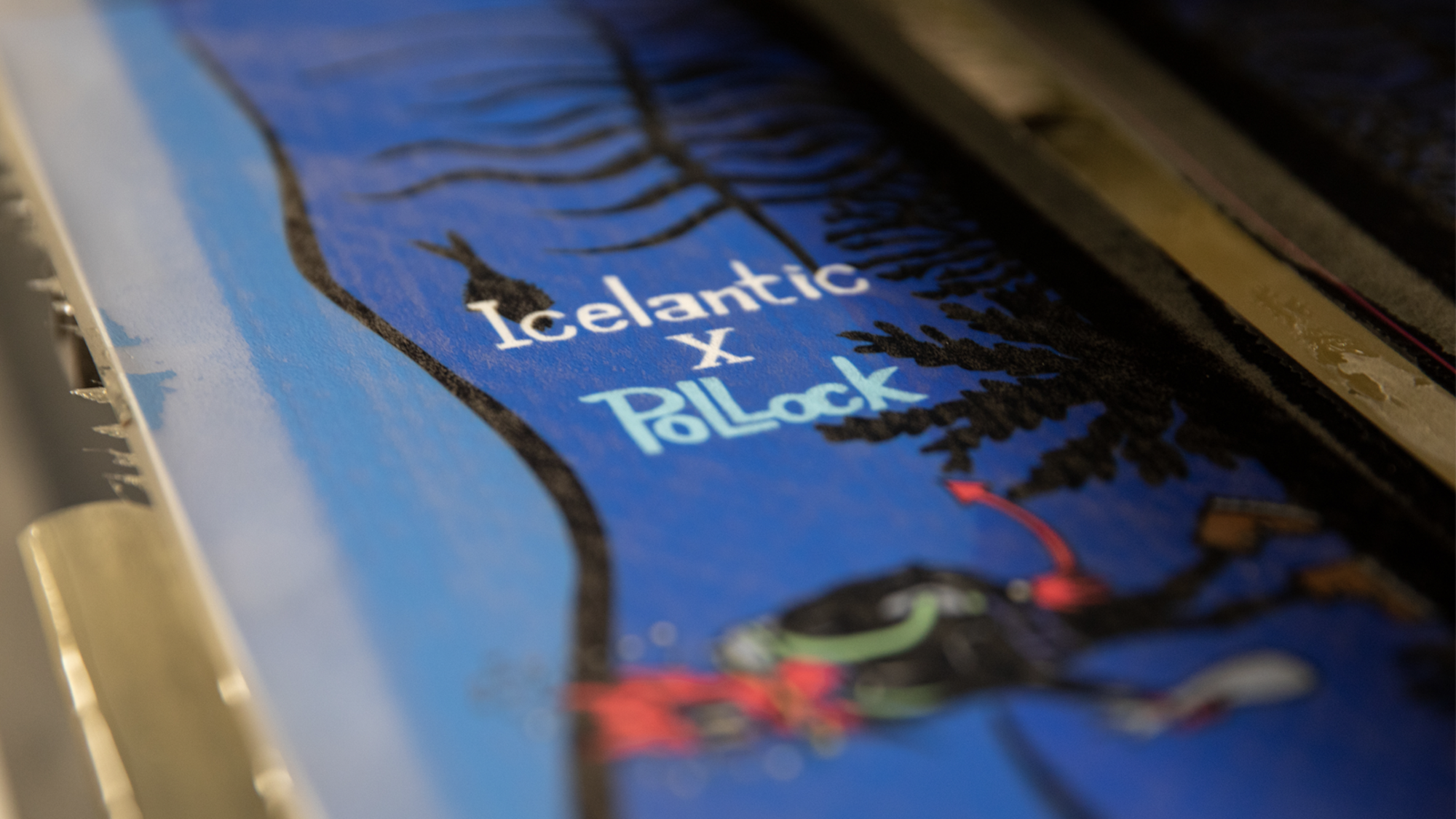INTERVIEW • JORDAN GRANT-KRENZ | PHOTOS • Courtesy of Icelantic Skis
Since the mid 1980s, Phish has kept the jam band scene alive and well. From humble beginnings on Americas northeastern seaboard, to sold out shows in Madison Square Garden, the crew has cemented themselves into rock & roll history. However, they certainly have not been alone on this journey, and there are those who have been there nearly every step of the way. Artist Jim Pollock is one such individual. A talented creator, he has devotedly forged works of art for the band for nearly three decades, and wants nothing but to keep the groove going.
Pollock is a multidisciplinary artist who does a plethora of work with a medium called linoleum printmaking. The process is time consuming, laborious, and incredibly impressive. Like all labors of love, Jim’s art is a presentation of the man himself. His works are fun-loving, detailed, vibrant, and incredibly unique. He asks you to look at life from a fresh perspective; one that might come across as cartoonish, but is in reality nuanced, thoughtful, and incredible needed in a world that tends to take itself all too seriously.
Colorado homegrown legend Icelantic Skis has once again joined forces with Pollock for their second collaborative ski. With a shared philosophy for craftsmanship and passion, it’s far from surprising that these two forces have found their way together.
This new work of art will be presented on Icelantic’s best-selling ski, the Nomad 105, in a full size run. Along with 200 signed fine art prints for sale, the skis will be available for pre-order at 10 a.m. MST on Saturday, September third.
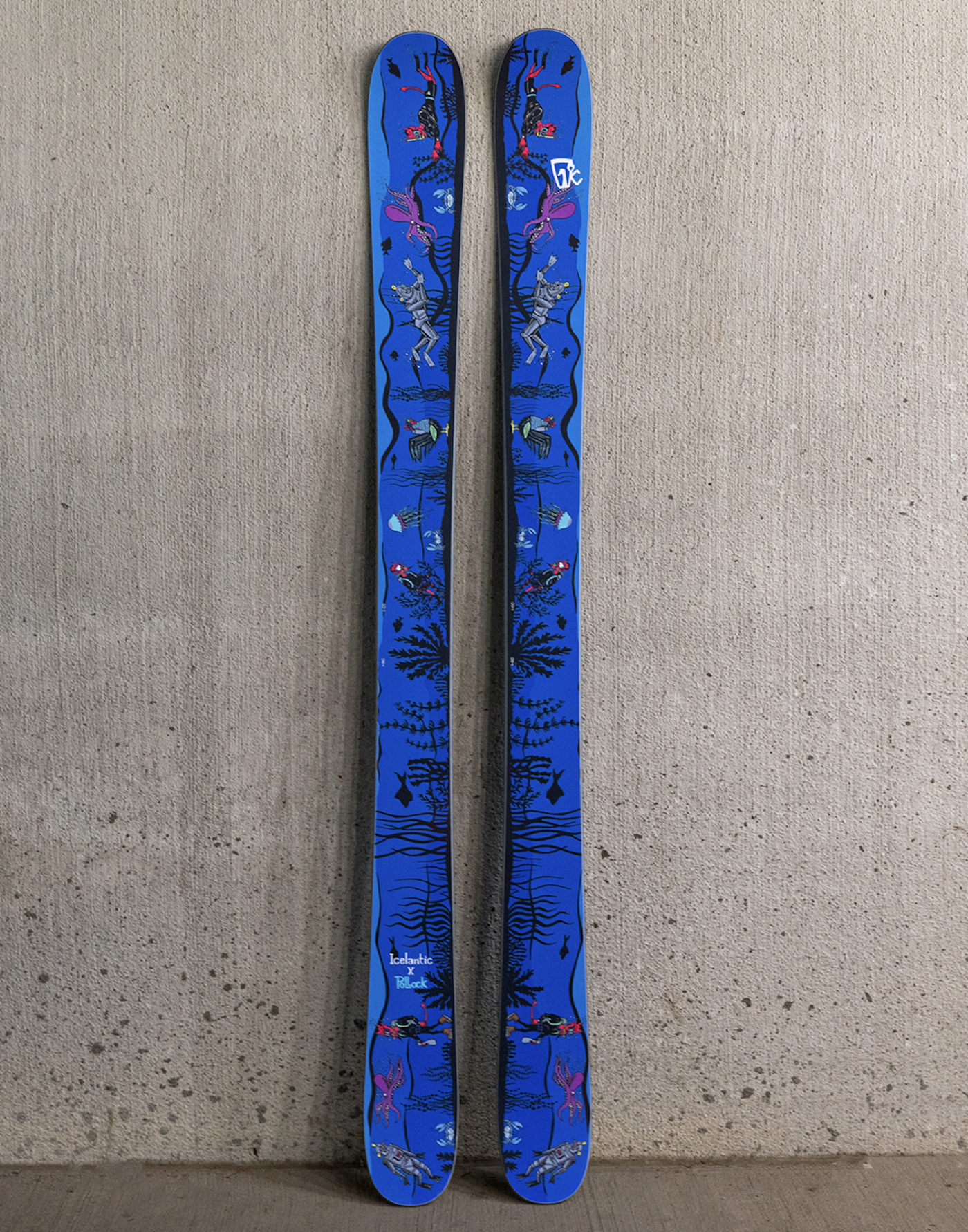
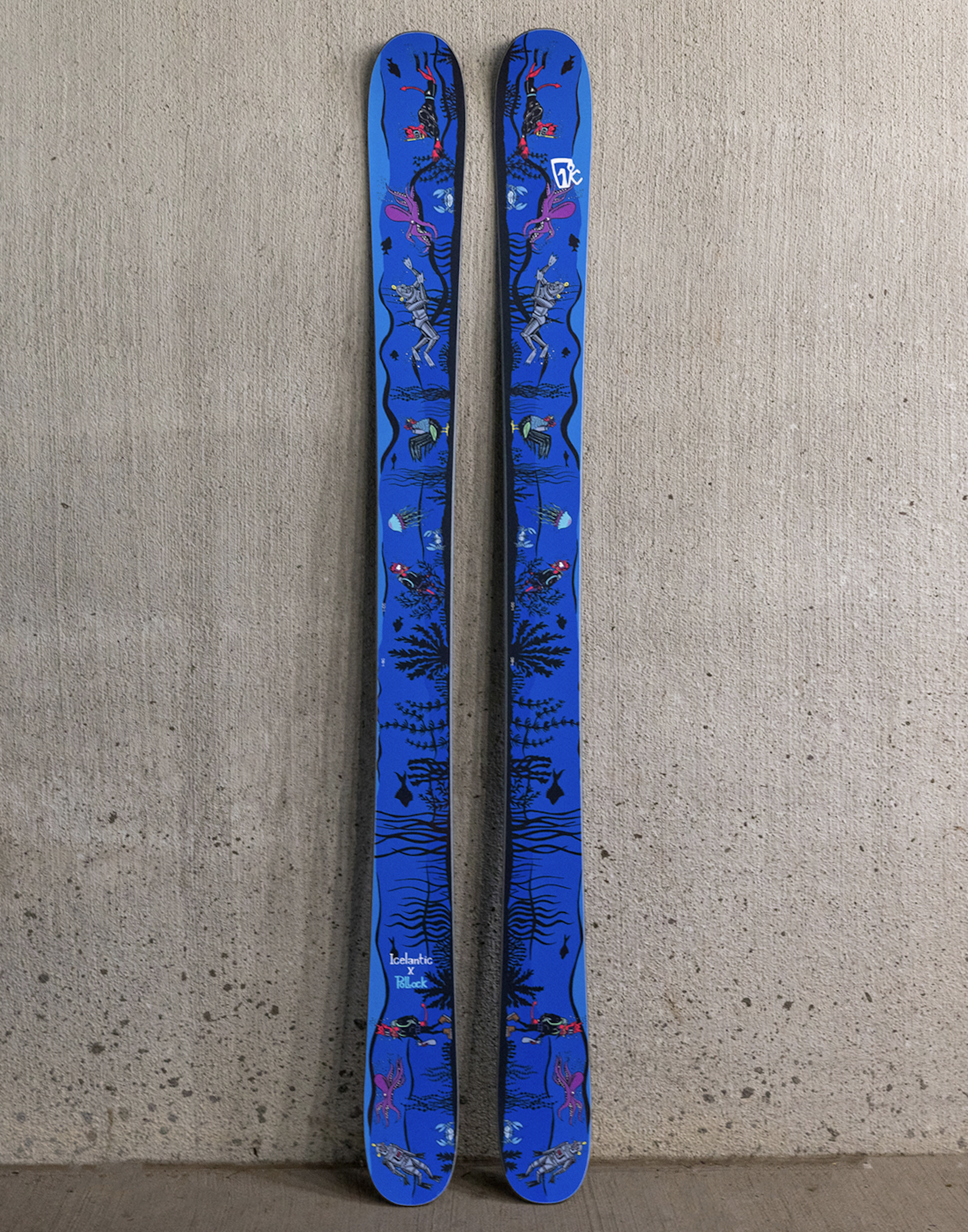
Icelantic’s Nomad 105, with Jim Pollock’s beautiful makeover
The underwater Icelantic x Pollock Nomad planks will make their debut during Phish’s four-night run at Dick’s Stadium in Denver. Ticket holders are invited to stop by The WaterWheel tent during all four nights of the show to enter to win a pair of skis or art print. The raffle supports The WaterWheel Foundation, Phish’s non-profit organization started in 1997 to help with the bands charitable efforts.
FREESKIER got on the horn with Jim Pollock to pick the brain of the creator, and find out about his lengthy journey to get to the art itself.
Jim, you’re with Icelantic for a second run. As an artist with your reputation, you must have a lot of collaboration offers. What brought you back?
I’m all about keeping relationships going with people I enjoy, and Icelantic certainly falls into that category. After the first ski we did together, we wanted to keep the relationship going and do another collaboration. I like the idea of doing things outside of the music industry, and it’s nice to find people that enjoy my unique style.
For those who don’t know, what is your tie to the music industry?
I’ve been doing art with the band Phish for three decades now. I feel incredibly lucky to be involved with a group that has been so sustained.
[Laughs] All thanks to the college friends who formed a band and got pretty good!
You became close with them in college?
Yeah, me and Page [McConnell] were pretty good friends at school in Vermont. He was always playing with a bunch of bands since he’s such a talented keyboardist, and joined Phish while we were at school together. When I left Goddard College and went to Chicago for The School of the Art Institute, we kept in touch, and I remember they would come through town and often crash on my floor.
They were always on the road and had a history of asking for art from me, since I had been creating during my time at Goddard. Over time the relationship has only strengthened, and I’m so grateful for it to have lasted all this time. It’s really kind of amazing to have such a long catalog of art largely thanks to Phish.
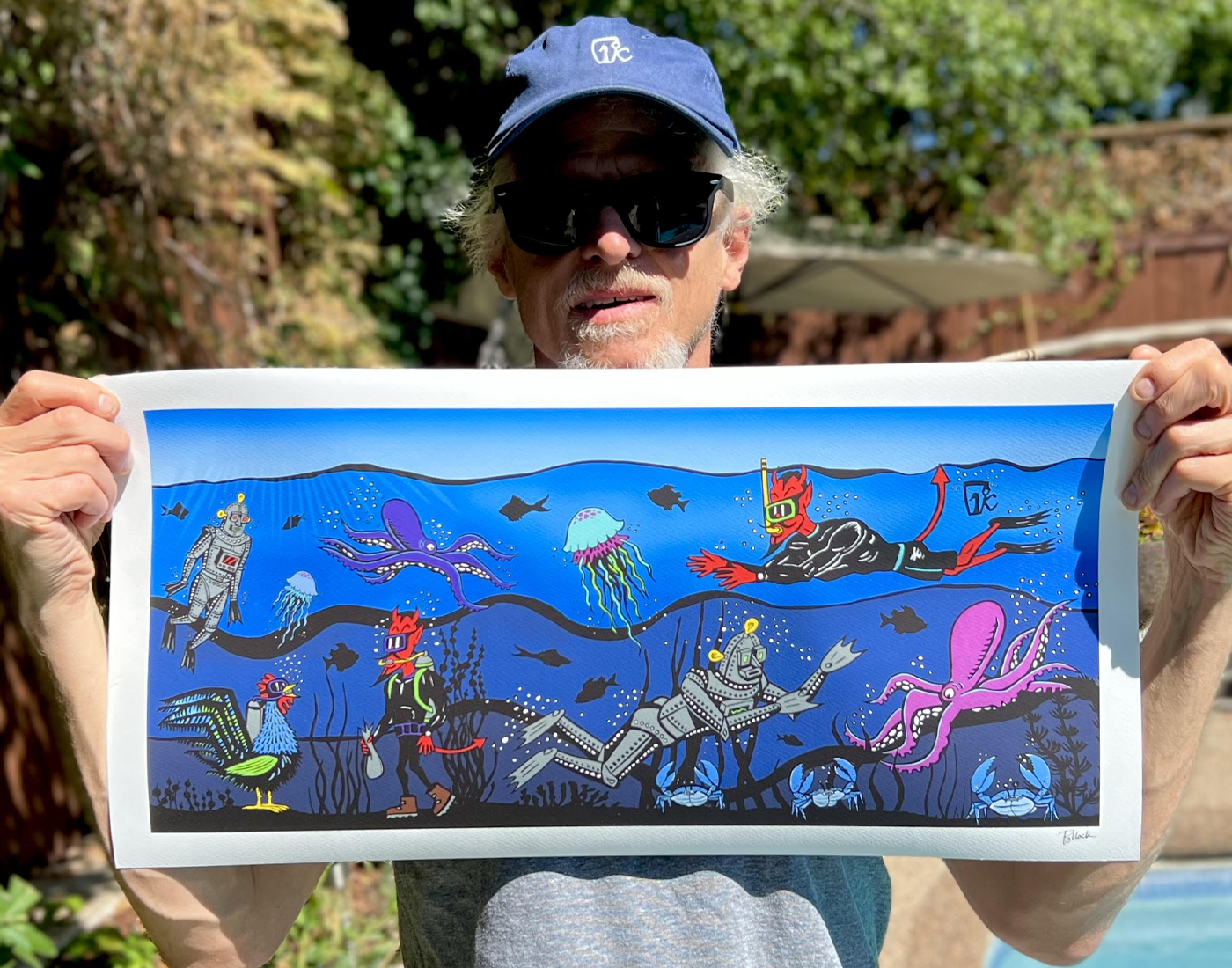
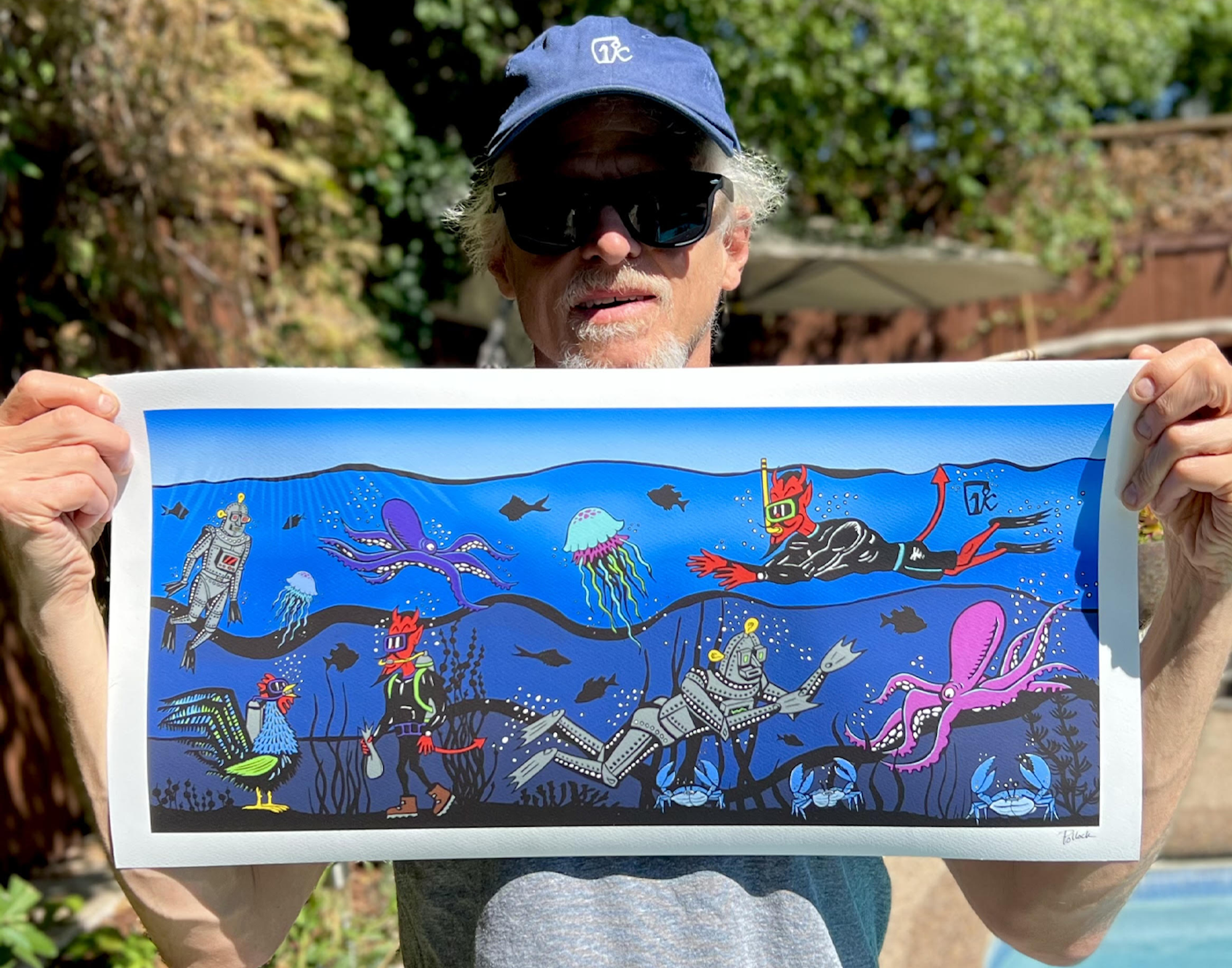
Artist Jim Pollock proudly toting the fine art print
It must be incredible to still be on this evolving journey with Phish. What does most of your art for them consist of?
Primarily linoleum prints, for posters and a variety of things really.
That’s a very specific discipline. What brought you to that?
Well my initial motivation for becoming a print maker was to create multiples instead of just one. If you make a lot of pieces, you can charge less money for them. You’ll be able to share your art more, get your name out there, and hopefully make money along the way. I came up in a time where art was very controlled by money, but ironically when I started to think of it as a craft, instead of as just art, it became easier to create, manufacture, and pay myself in the process.
I know people debate the definition between art and craft, but like I said, there’s an art to anything people do. So once I identified myself as a craftsman, I still did the art, but I wasn’t as boxed in.
So as a craftsman, an artist, or both, how would you describe your style?
It’s definitely cartoon influenced. I’ve read a lot of comics, which is the type of art I originally wanted to do – comic book art, that is – so I’ve always loved incorporating that. The characters, the bright colors, I think that shows in my work. I was certainly influenced by the surrealists as well. I guess my whole idea is being more childlike, but more importantly, looking at things from a new perspective.
I think how you create adds a lot to the style, too. I taught myself linoleum printmaking after I had left the Art institute in Chicago, so there’s a certain element to my style where I want it to be a bit like folk art and self taught in a sense. The simplicity of line work in that [folk art] style goes very well with my printmaking process.
I found a quote in the Pittsburgh Post Gazette about you that said, “Phish’s approach to music and performing is that they take it so seriously, but they never take themselves so seriously … Jim’s art really plays into that style. There’s always something not quite right because there’s a comedic value to it.” What are your thoughts on this style dynamic between you and Phish?
Oh yeah, they’ve taught me a lot about… well, a lot of things. How they act in public, how they treat their art, and how they find distance from it. They’ve certainly taught me how to find humor in it, and that’s so crucial because you’re going to make mistakes in any craft, and it’ll be easier to keep going if you can laugh it off.
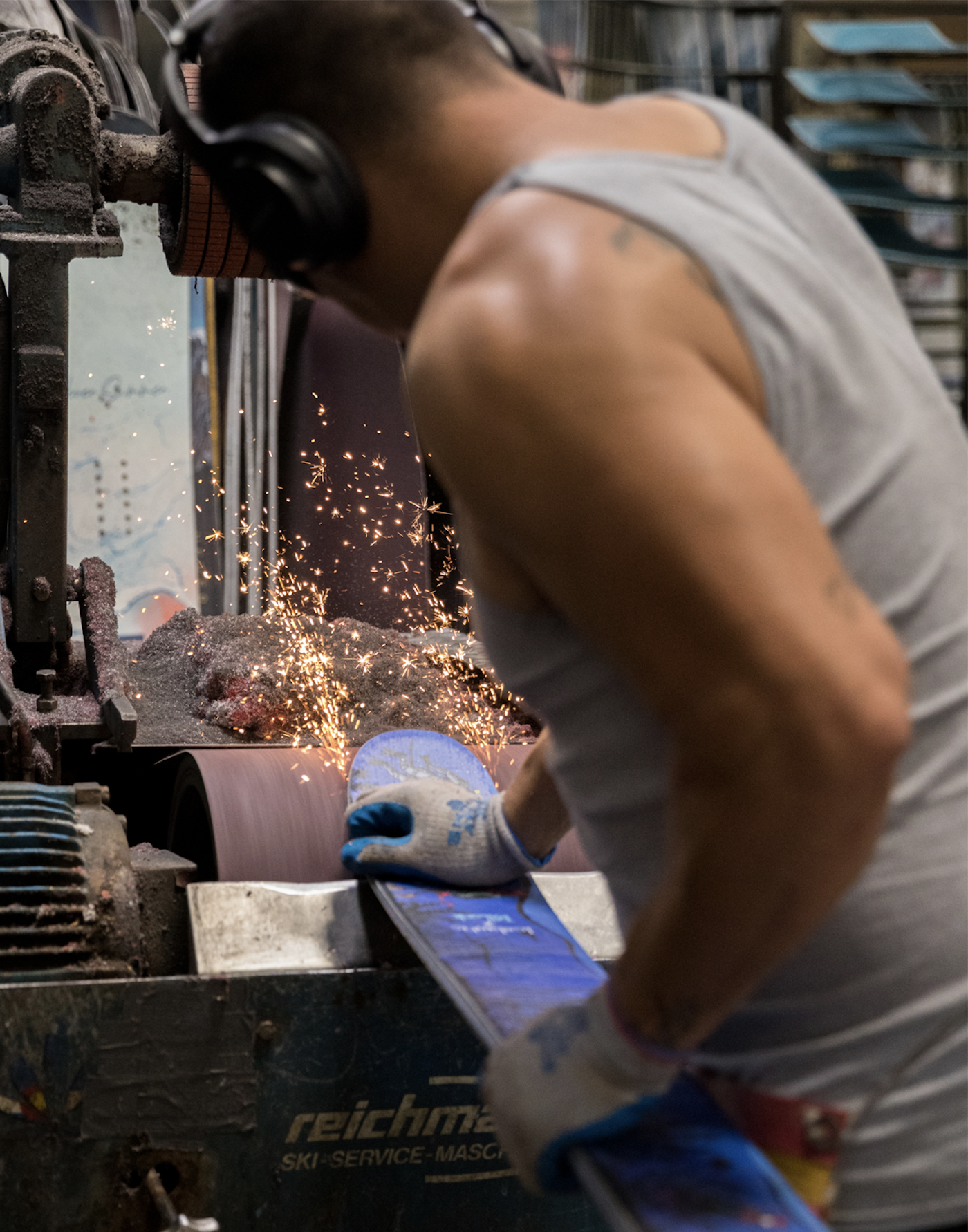
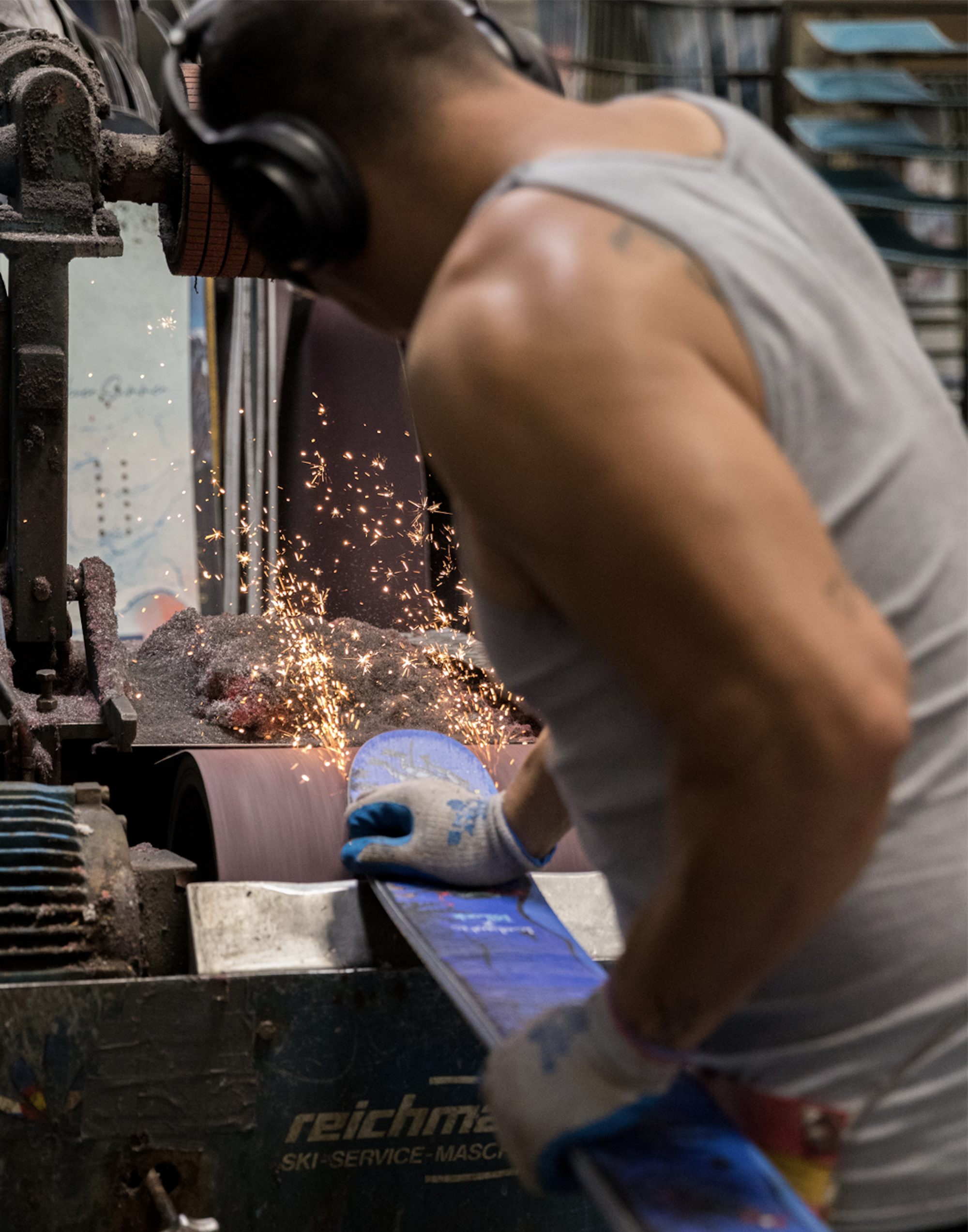
Icelantic’s Nomad 105, all handmade Colorado
Whether it’s a piece with Phish or this collaboration with Icelantic, how do you go about your design process? Does each piece have a commonality or is it sporadic?
There’s definitely common ground. I guess you could say I’m a little behind, but I don’t design anything digitally; I’m still brush-and-ink. Some might call it old school, but it works great for me. I love having that analog process. It’s not that I’m against technology or anything like that. I’m always trying to teach myself new stuff whether it’s for my craft, technology, or Jazz chords on my guitar. That feeling of learning and progression, it’s such a draw. I’m so fortunate to be in a position where I get to teach myself whatever I want in my field and try it. But as far as the pieces go, I think they all are very unique, but some designs and characters certainly carry through.
Are these characters and scenes for this piece specific ones that have gathered stories over the years?
The robot and the rooster were characters from the last ski we did, but they have separate origins. The rooster is a nod to a poster I did for Phish at the *University of Illinois Chicago Pavilion in 1998 – though it’s made other appearances too – and the robot comes from a poster that I did for The Great Went, which was a Phish festival that’s celebrating its 25th anniversary. I like to portray them each in a cartoony, not-so-insidious fashion. I mean, everyone’s always trying to peg something on the devil, but who doesn’t like the devil? I think we can all have a little sympathy for him.
Was that a coincidental Rolling Stones reference?
[Laughs] ‘Sympathy for the Devil’, that’s exactly right.
*Jim’s 2012 Phish Chicago Box Set Poster is a personal favorite. It is a sprawling work of art, and highly worth a look.
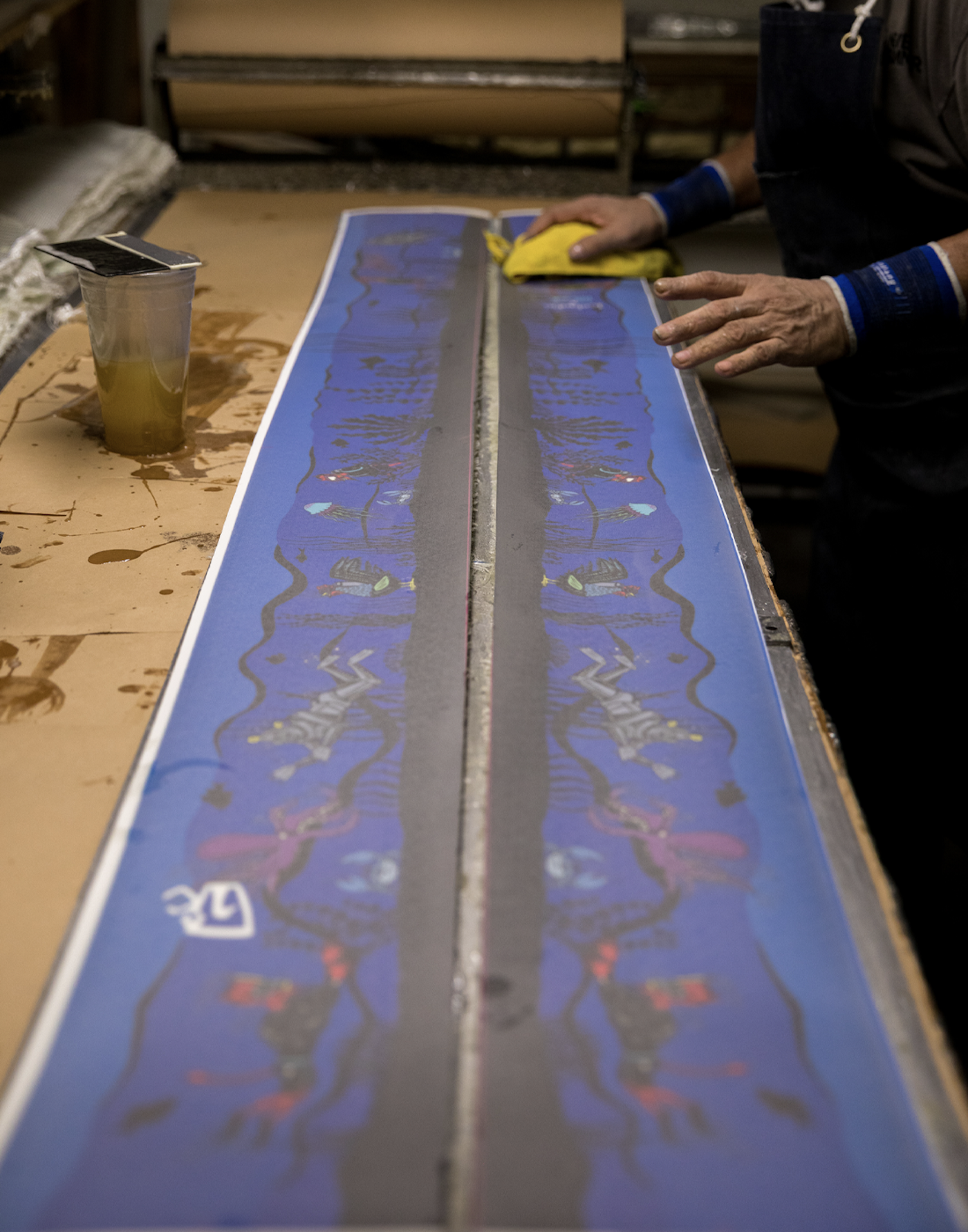
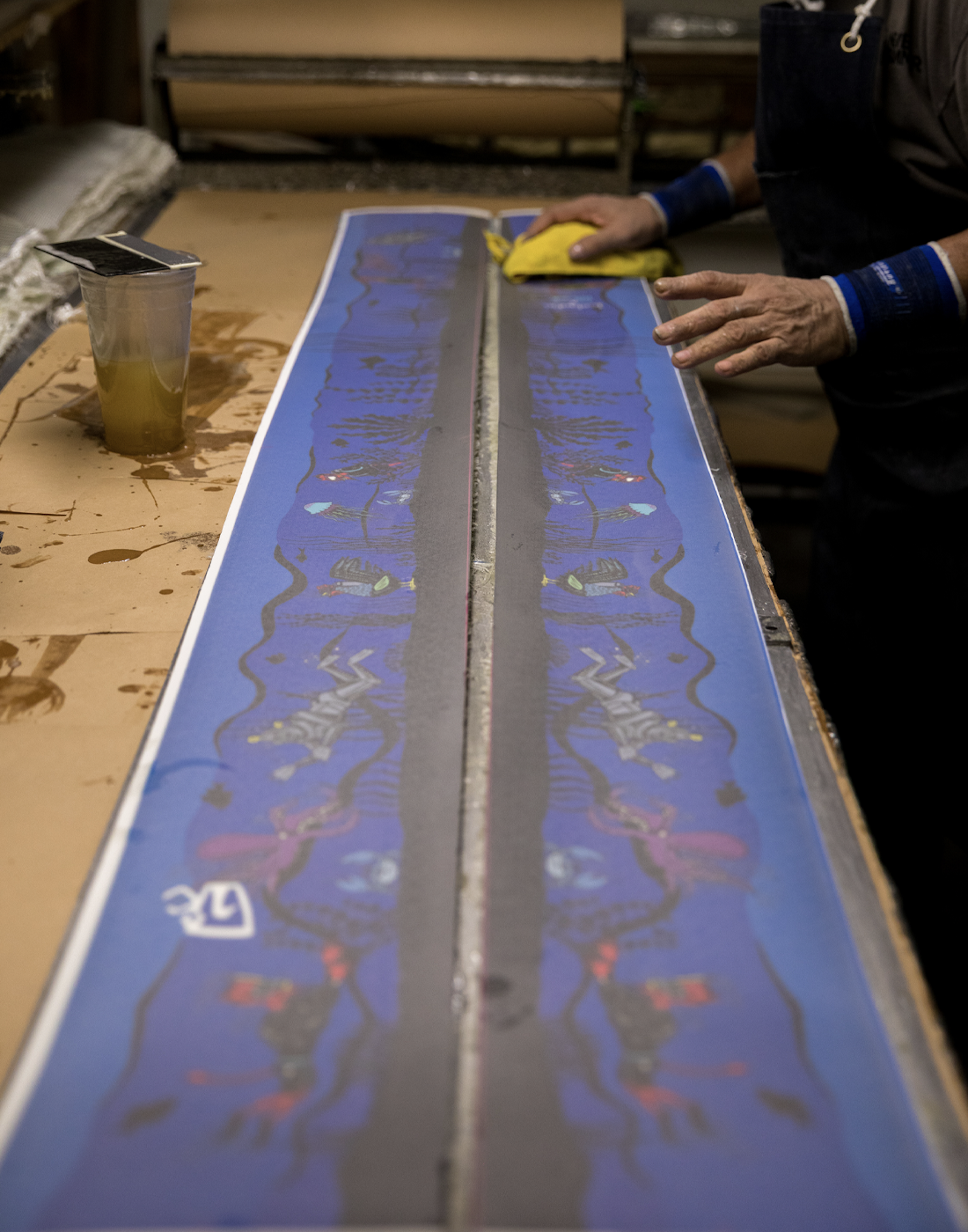
The Pollock top-sheet being applied to the Nomad 105 in Icelantic’s American made factory
Many artists, (or craftsmen), love to have their work on exhibit, but you seem to prioritize having your work associated with the action of the world, so to speak. Whether it’s with a legendary brand like Phish or an iconic brand like Icelantic, what’s the draw?
Well I totally see similarities in our philosophies between them and me. They both really want to take their time, and make a really good product. I know from experience that Icelantic is more focused on making the best creation they can. It isn’t crazy that I’ve found my way to both of these entities.
And as far as people associating memories with the art, that’s huge, man. I had done a snowboard design in the past with Burton, and I saw pictures of people with the board on their wall. It was still great, but with Icelantic I got a bunch of shots of people using the skis, which I thought was wildly cool. I love seeing it being used, out in nature, all of that.
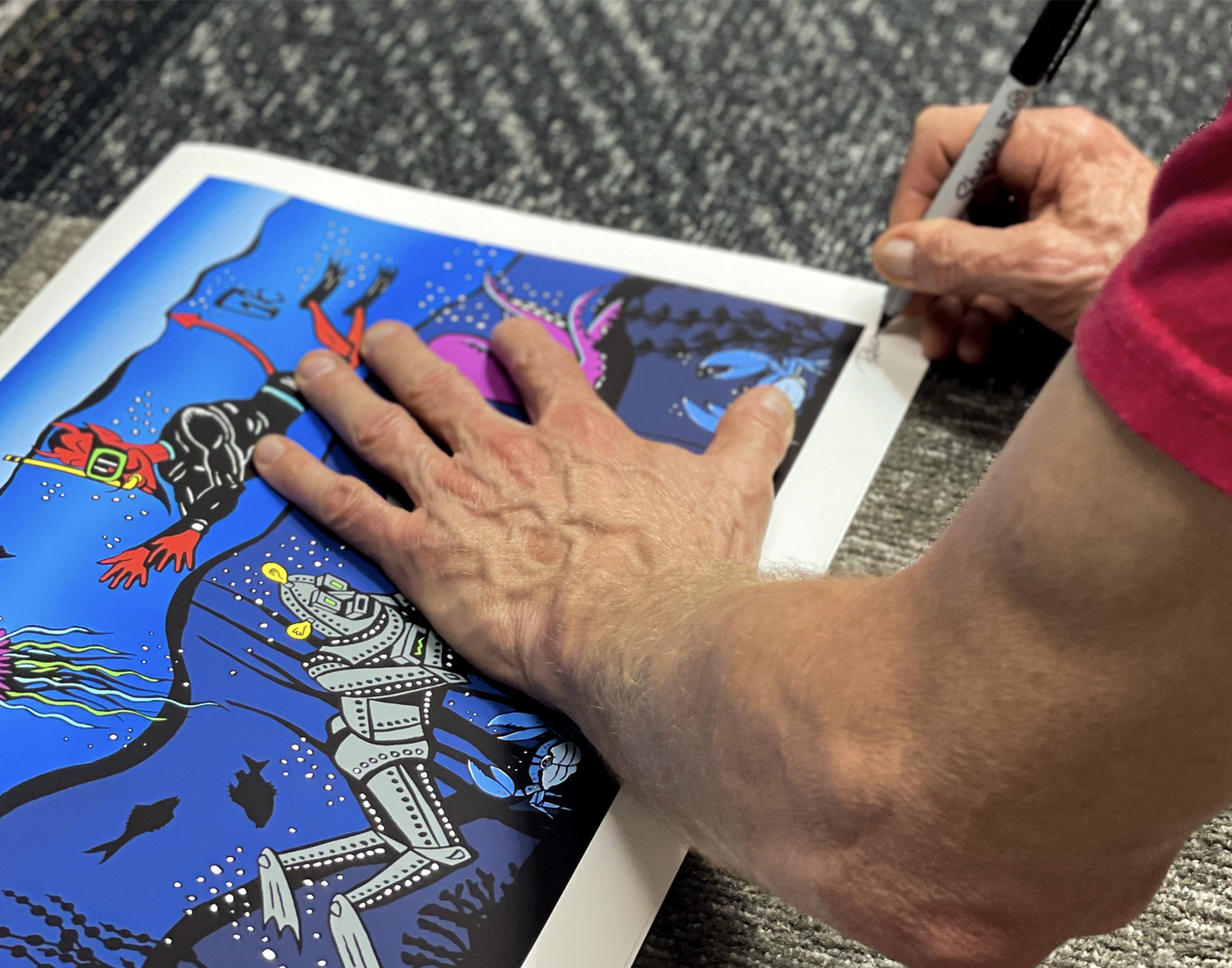
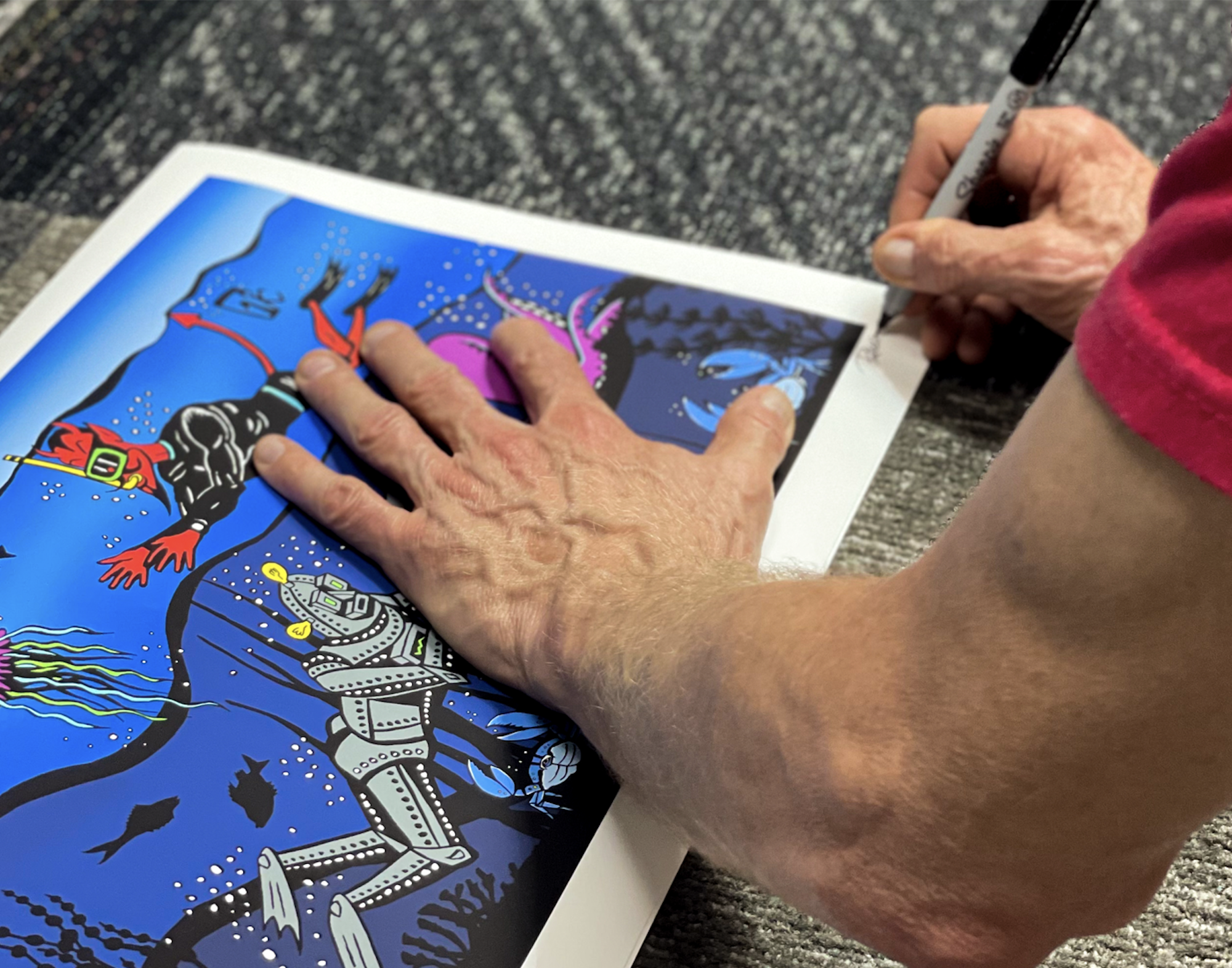
Fresh ink from Pollock
You may have already known this, but Icelantic’s slogan happens to be, ‘Return to Nature’. Everyone can put their own spin on the phrase, so what does it mean to you?
I see it as a reminder to take advantage of being outside when you can; appreciating it, allowing yourself to be influenced by it. I’ve always found love for companies like Icelantic and much of the sporting industry in general, promoting the idea of getting outdoors and helping folks better themselves. It can so easily be overlooked when you get caught in profits.
You’re certainly someone that looks to help people often. Since we’re on the subject, what is your role with The WaterWheel Foundation?
It’s super important to me. WaterWheel is Phish’s nonprofit that they started 25 years ago, and I’ve been fortunate enough to help out with. Basically they have relationships with various nonprofits in cities that the band tours in, and oftentimes they come back to the city now with a relationship to those nonprofits. It’s a variety of causes ranging from the environment to women’s shelters to food shelters. It really runs the gambit, but it’s a great organization and they’ve given away multi-millions of dollars to smaller nonprofits that are greatly helped. I’ve done a good handful of prints for The Foundation, and when I go in to do signings or help out, it’s just powerful to see first hand. It’s truly a group effort for things like these.
Well said. It will certainly be in a less direct way, but your art will be helping a few hundred skiers make incredible memories on the remarkable Nomad 105 ski. I can tell you first hand, that art is going to be associated with some people’s best day of the year.
I’m so appreciative of that, and I really take it as such an honor. I’m always amazed and joyful when people tell me that, whether it’s a ski or a poster or anything in between. I’ve had many jobs in my life, and this is by far the best. There’s all types of work, and I hope everyone receives appreciation like that. It’s something that was never expected, but is always appreciated.
Are there any notes you’d like to leave people with as they see the art on the ski?
I hope they feel just a general playfulness. The colors and figures, I’m purposefully trying too hard to get your attention, and I hope it works, if not to just bring you into the moment and smile. It’s cliche, but I think we’re all guilty of not being in the here and now enough. After all, it’s easier to have fun looking at a devil in scuba gear.
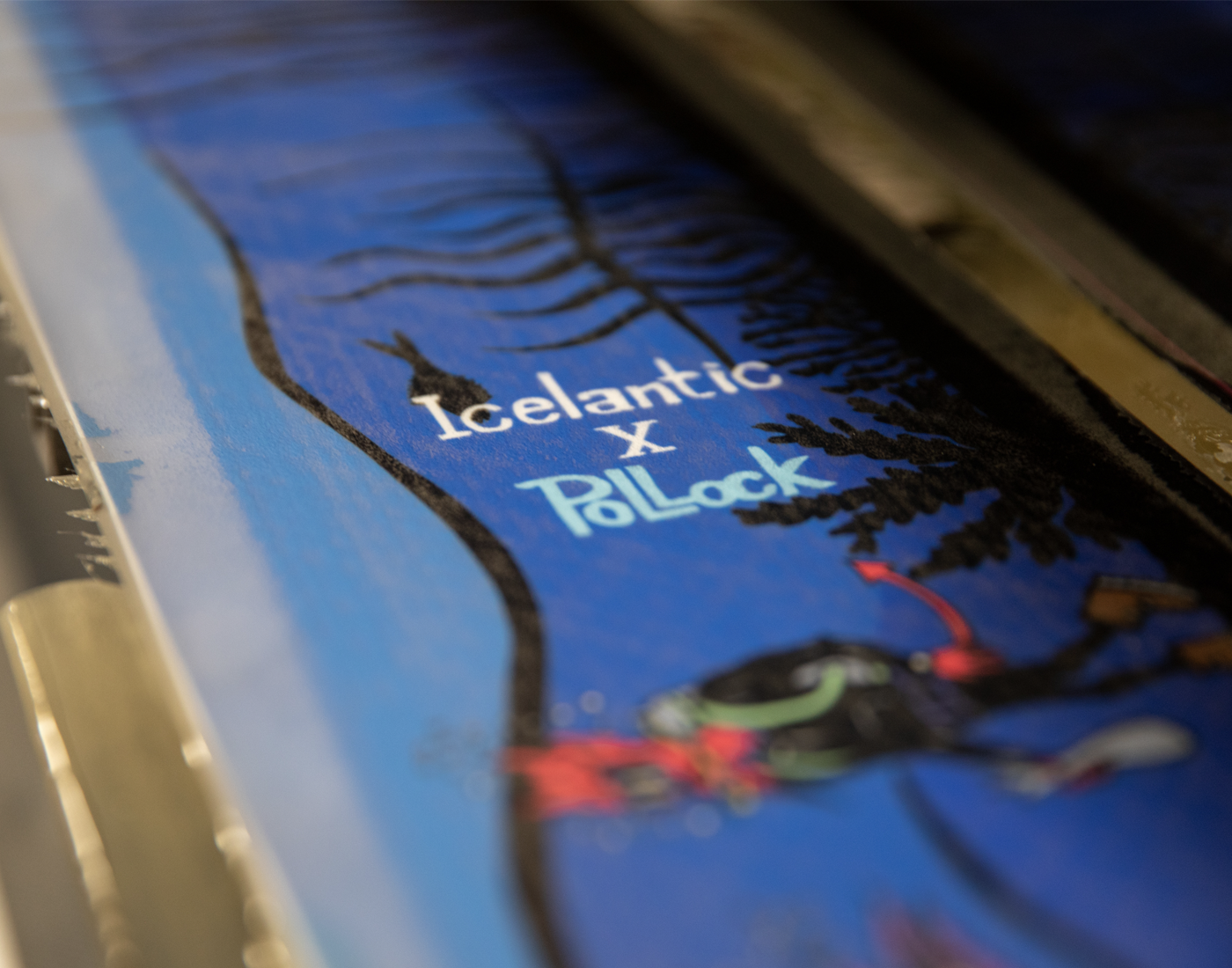
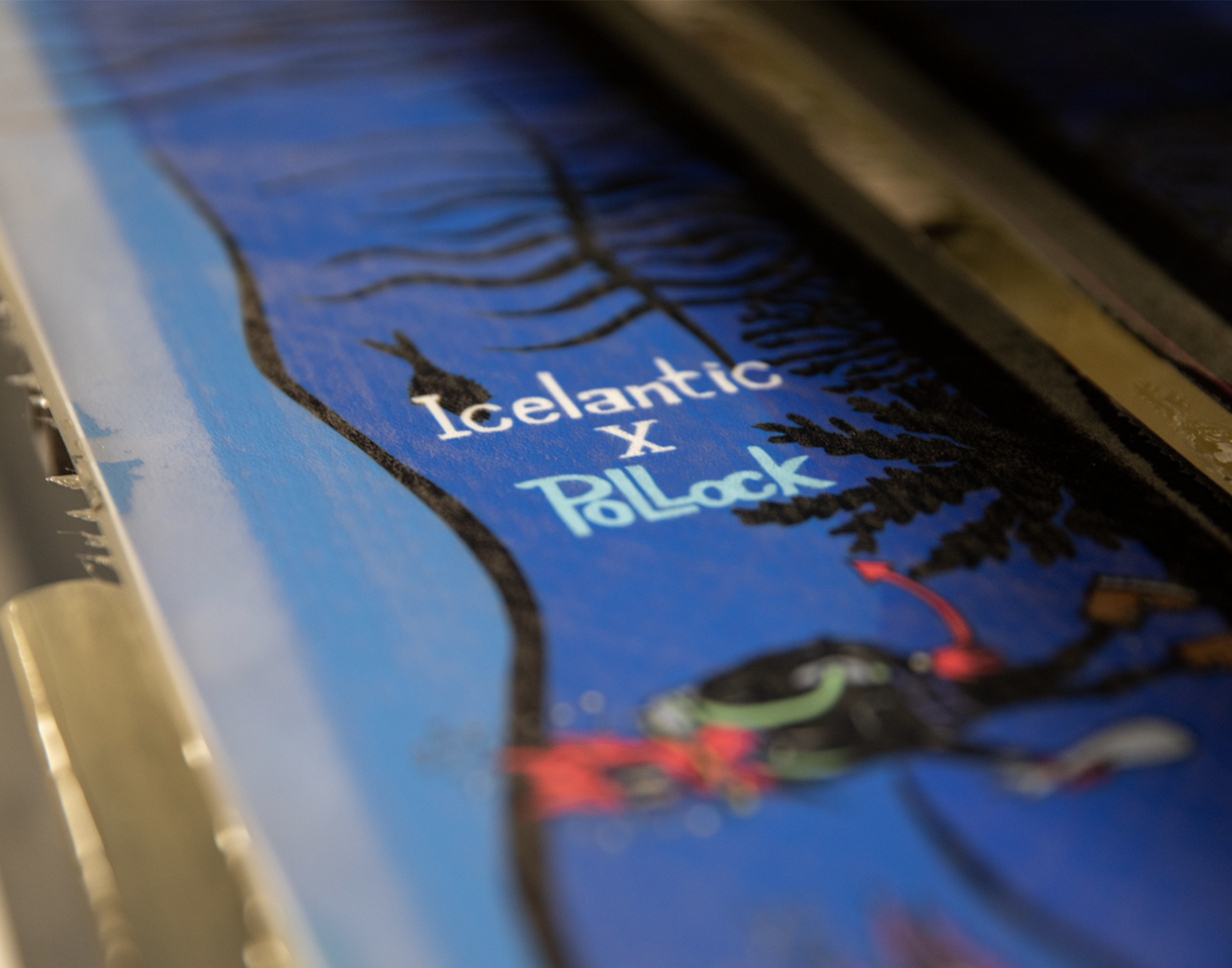

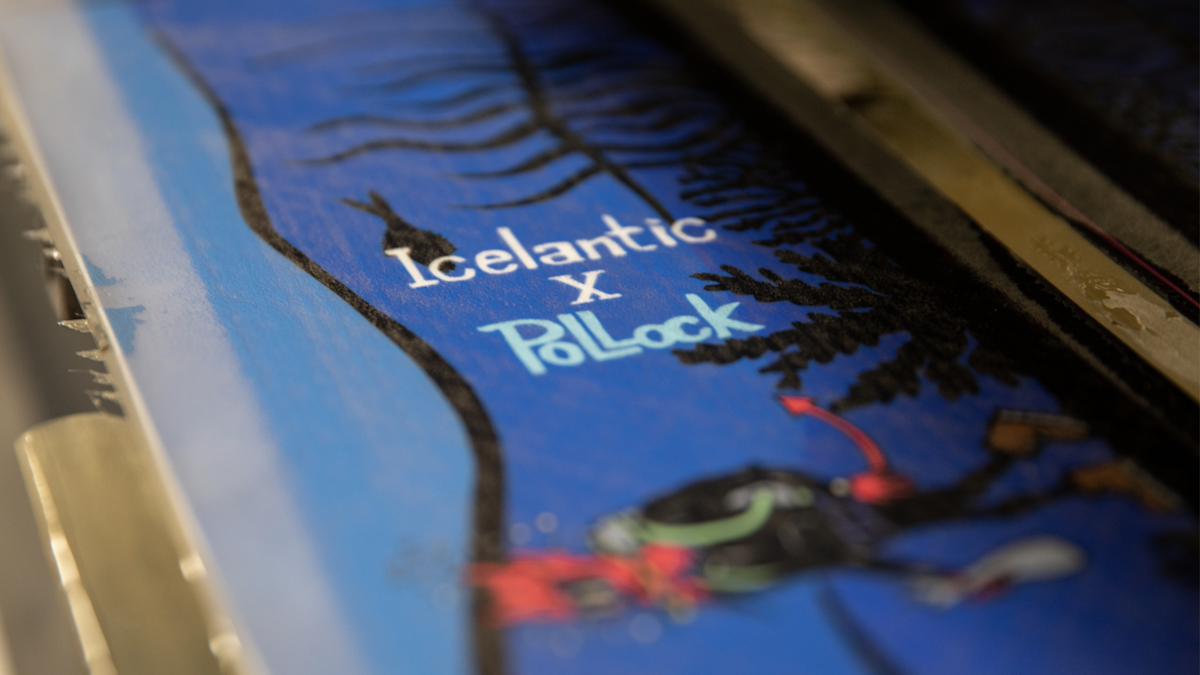

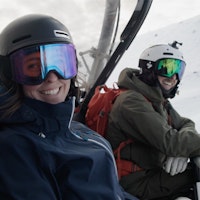
![[GIVEAWAY] Win a Head-to-Toe Ski Setup from IFSA](https://www.datocms-assets.com/163516/1765920344-ifsa.jpg?w=200&h=200&fit=crop)

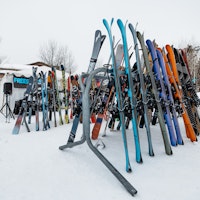
![[GIVEAWAY] Win a Legendary Ski Trip with Icelantic's Road to the Rocks](https://www.datocms-assets.com/163516/1765233064-r2r26_freeskier_leaderboard1.jpg?auto=format&w=400&h=300&fit=crop&crop=faces,entropy)
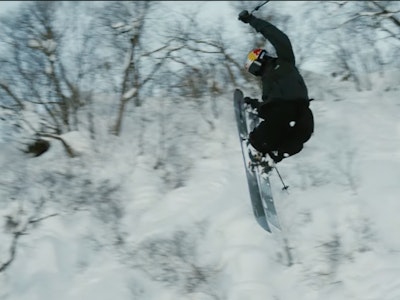

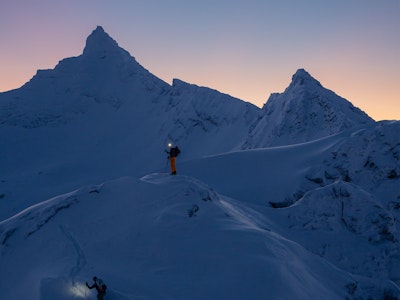

![[GIVEAWAY] Win a Head-to-Toe Ski Setup from IFSA](https://www.datocms-assets.com/163516/1765920344-ifsa.jpg?auto=format&w=400&h=300&fit=crop&crop=faces,entropy)
